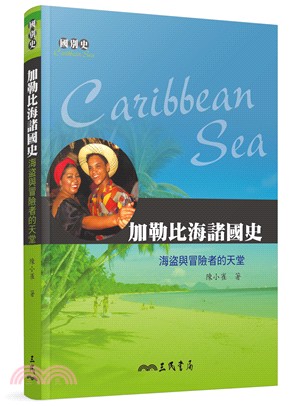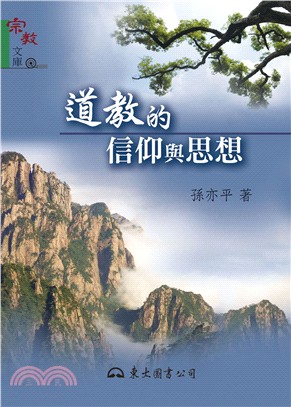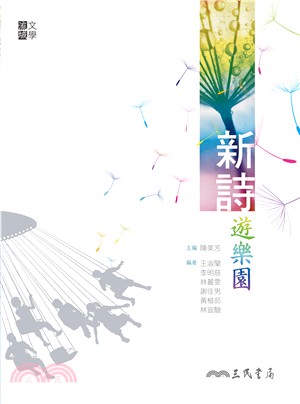Limnology
商品資訊
定價
:NT$ 11700 元優惠價
:90 折 10530 元
若需訂購本書,請電洽客服 02-25006600[分機130、131]。
相關商品
商品簡介
作者簡介
目次
商品簡介
Limnology provides an in-depth and current overview of the field of limnology. The result of a major tour de force by two renowned and experienced experts, this unique and richly illustrated reference presents a wealth of data on limnology history, water as a substrate, lakes’ origins and aquatic biota. Besides a general part, it gives special focus to neotropical limnology, prevalently applicable in countries in the Southern Hemisphere.
Starting with the essentials, some definitions and a historical account, this volume then details the main interaction mechanisms with physical and chemical factors, diversity and geographical distribution. With regard to the major continental aquatic systems, it treats the dynamics, variability and characterization of lakes, reservoirs, flooded areas, saline lakes, estuaries and coastal lagoons. The impact of human activity on water resources and the need for the rehabilitation of watersheds, watershed ecosystems and estuaries are addressed subsequently. To illustrate theory, the final part includes research examples in limnology, ecology and environmental sciences in different geographical contexts, as well as ideas for new investigations.
This reference volume is intended for researchers and professionals working on inland waters, lakes and rivers within the fields of biology, ecology, environment, forestry, geochemistry, geophysics, and water management. It will also benefit students in the aforementioned areas and readers involved with limnology in related disciplines, such as earth sciences, environmental, water and geological engineering.
Starting with the essentials, some definitions and a historical account, this volume then details the main interaction mechanisms with physical and chemical factors, diversity and geographical distribution. With regard to the major continental aquatic systems, it treats the dynamics, variability and characterization of lakes, reservoirs, flooded areas, saline lakes, estuaries and coastal lagoons. The impact of human activity on water resources and the need for the rehabilitation of watersheds, watershed ecosystems and estuaries are addressed subsequently. To illustrate theory, the final part includes research examples in limnology, ecology and environmental sciences in different geographical contexts, as well as ideas for new investigations.
This reference volume is intended for researchers and professionals working on inland waters, lakes and rivers within the fields of biology, ecology, environment, forestry, geochemistry, geophysics, and water management. It will also benefit students in the aforementioned areas and readers involved with limnology in related disciplines, such as earth sciences, environmental, water and geological engineering.
作者簡介
Dr. Jose Galizia Tundisi obtained his PhD (Estuaries Ecology, 1969) at the University of São Paulo/University of Southampton and his DSc (Ecology, 1977) at the University of São Paulo. He is President of the International Institute of Ecology in São Carlos, Brazil. He was previously a Full Professor of Biological Sciences, Federal University of São Carlos, 1972-84; Full Professor of Environmental Sciences, University of São Paulo, 1984-94; and President, Brazilian of the National Research Council, 1995-99. His awards include the Gold Medal “Augusto Ruschi”, Brazilian Academy of Sciences, 1986; the Moinho Santista Prize in Ecology, 1992; the Highest Brazilian Award for scientific achievement; the Boutros Ghali Prize for Environment and Development, UN, 1995; and the Commendador, Brazilian Government. He is a Member of the Brazilian Academy of Sciences, the São Paulo Academy of Sciences, and the Ecology Institute, “Excellence in Biology”, in Germany. Dr. Tundisi is the founder and director of the International Institute of Ecology in Sao Paulo, Brazil.
Dr. Takako Matsumura Tundisi graduated in Natural History and received her Ph.D. in Biological Sciences (Zoology) from the University of São Paulo, Brazil. She was a lecturer and researcher in Aquatic Ecology at the Federal University of São Carlos for over two decades. Today, she is a director of the International Institute of Ecology (IIE) and of the International Association of Ecology and Environmental Management (IIEGA) in Brazil, both research and consulting organizations that have developed numerous research projects in water resources management and water quality through mathematical modeling.
Dr. Takako Matsumura Tundisi graduated in Natural History and received her Ph.D. in Biological Sciences (Zoology) from the University of São Paulo, Brazil. She was a lecturer and researcher in Aquatic Ecology at the Federal University of São Carlos for over two decades. Today, she is a director of the International Institute of Ecology (IIE) and of the International Association of Ecology and Environmental Management (IIEGA) in Brazil, both research and consulting organizations that have developed numerous research projects in water resources management and water quality through mathematical modeling.
目次
Contents
Acknowledgements Foreword by Dr. Jack Talling Foreword by Dr. Joan Armengol BacheroForeword by Dr. Blanca Elena Jiménez Cisneros Foreword by Dr. Odete Rocha
1 Limnology, defi nition and objective1.1 Concepts and Definitions 1.2 Limnology: history and development 1.3 Tropical limnology 1.4 Limnology in the 21st century 1.5 Limnology in Brazil 1.6 Importance of limnology as a science
2 Water as a medium 2.1 Water’s physical and chemical properties 2.2 The water cycle and distribution of water on the planet3 The origin of lakes 3.1 General features of lakes and drainage basins 3.2 Origin of lakes 3.3 Lake morphology and morphometry 3.4 Zonation in lakes 3.5 Artifi cial dams 3.6 Global distribution of lakes by origin
4 Physical processes and circulation in lakes 4.1 Penetration of solar energy in water 4.2 Heat balance in aquatics systems 4.3 Physical processes in lakes, reservoirs and rivers 4.4 Types of flow 4.5 Turbulence in surface waters, Reynolds Number and Richardson Number, and effects of density and stratification 4.6 Thermal stratification and vertical and horizontal circulation in inland aquatic ecosystems 4.7 Thermal stratifi cation and de-stratification in reservoirs 4.8 Diel variations of temperature 4.9 Stability of lakes and reservoirs 4.10 Importance of the process of thermal stratification and de-stratification in the diurnal and noctural temperature cycles of water 4.11 Ecological signifi cance of the metalimnion and importance of meromixis4.12 Principal interactions of the processes of circulation, diffusion, chemical composition of water and of communities in lakes, reservoirs, and rivers 4.13 Circulation in lakes, reservoirs and rivers 4.14 Diffusion 4.15 Intrusion in lakes and reservoirs
5 The chemical composition of water 5.1 Introduction 5.2 Dissolved substances in water 5.3 Ionic composition in saline lakes and inland wetlands 5.4 The roles of cations and anions in biological systems 5.5 Dissolved gas: air-water interactions and the solubility of gases in water 5.6 The CO2 system 5.7 Seasonal and diurnal variations in O2 and CO2 5.8 Other gases dissolved in water
6 Organisms and communities in inland aquatic ecosystems and estuaries 6.1 Colonization of aquatic environments 6.2 Diversity and distribution of organisms: limiting and controlling factors 6.3 Communities in inland aquatic ecosystems 6.4 Dispersal, extinction, speciation and isolation of aquatic biota 6.5 Principal groups of organisms in aquatic communities 6.6 Spatial organization of aquatic communities 6.7 Aquatic biodiversity in the state of São Paulo 6.8 Fauna in groundwater
7 The dynamic ecology of aquatic plant populations and communities 7.1 Importance of population studies in aquatic systems 7.2 Main factors in biological processes 7.3 Population and community succession 7.4 General features of phytoplankton 7.5 Periphyton 7.6 Aquatic macrophytes
8 The dynamic ecology of aquatic animal populations and communities 8.1 Zooplankton 8.2 Benthic macroinvertebrates 8.3 Composition and wealth of plankton species and abundance of organisms in pelagic and littoral regions of lakes and reservoirs 8.4 Fish 8.5 Food chains and Food webs 8.6 Bioindicators: organisms as indicators of pollution in natural waters
9 The flow of energy in aquatic ecosystems 9.1 Definitions and characteristics9.2 The photosynthetic activity of aquatic plants 9.3 Factors limiting and controlling phytoplanktonic productivity 9.4 Coefficients and rates 9.5 Photosynthetic efficiency 9.6 Model of primary production of phytoplankton 9.7 Methods for measuring the primary production of periphyton 9.8 Measuring the primary productivity of aquatic macrophytes and comparison with other photo-autotrophic components 9.9 Indirect measurements of in situ primary production 9.10 Measuring primary production in different ecosystems 9.11 Primary production in tropical regions and temperate regions 9.12 Secondary production 9.13 Bacteria and energy flow 9.14 Effi ciency of food webs and total organic production 9.15 Fishery production and its correlation with primary production
10 Biogeochemical cycles 10.1 The dynamics of biogeochemical cycles 10.2 Carbon cycle 10.3 The phosphorus cycle 10.4 The nitrogen cycle 10.5 The silica cycle 10.6 Other nutrients 10.7 The sediment-water interface and interstitial water 10.8 Vertical distribution of nutrients 10.9 Transport of sediments from terrestrial systems and biogeochemical cycles 10.10 Organisms and biochemical cycles 10.11 The concept of limiting nutrients 10.12 ‘New’ and ‘regenerated’ production10.13 Greenhouse gas and biogeochemical cycles
11 Lakes as ecosystems 11.1 The lacustrine system as a unit 11.2 Ecological structures, principal processes and interactions 11.3 Principles of theoretical ecology applied to the interactions of drainage basin, lakes, and reservoirs 11.4 Forcing functions as external factors in aquatic ecosystems 11.5 The interactions of the littoral zone in lakes and the limnetic zone 11.6 Lakes, reservoirs and rivers as dynamic systems: responses to external forcing functions and their impacts 11.7 Palaeolimnology 11.8 Transport of dissolved particulate organic matter and vertical and horizontal circulation in aquatic ecosystems
12 Man-made reservoirs 12.1 General features and positive and negative impact 12.2 Technical aspects of constructing reservoirs 12.3 Important variables in the hydrology and functioning of reservoirs 12.4 Interactions of reservoirs and drainage basins – morphometry of dams 12.5 Succession and evolution in reservoirs during fi lling 12.6 Reservoir systems12.7 Principal operating processes and mechanisms in reservoirs 12.8 The biochemical cycles and chemical composition of reservoir water 12.9 Pulses in reservoirs 12.10 Communities in reservoirs: the aquatic biota, its organization and functions in reservoirs 12.11 Biomass and fi shery production in reservoirs12.12 ‘Evolution’ and aging of the reservoir 12.13 Multiple uses and management of reservoirs12.14 Urban reservoirs 12.15 Research on reservoirs
13 Rivers 13.1 Rivers as ecosystems 13.2 Transport processes 13.3 Longitudinal profi le and classifi cation of the drainage network 13.4 Fluctuations in levels and discharge cycles 13.5 Chemical composition of the water and the biogeochemical cycles 13.6 Classifi cation and zonation 13.7 Intermittent rivers and streams 13.8 Primary production 13.9 Energy flow 413.10 The food chain 13.11 Large rivers 13.12 Fish communities in lotic systems 13.13 Drift 13.14 Impact of human activities 13.15 Restoration of rivers
14 Estuaries and coastal lagoons 14.1 General features 14.2 Sediment in estuaries 14.3 Chemical composition and processes in brackish waters 14.4 Communities in estuaries 14.5 Distribution of organisms in estuaries and tolerance of salinity 14.6 Maintenance of stocks of planktonic and benthic populations in estuaries 14.7 Primary productivity in estuaries 14.8 The food web in estuaries 14.9 Detritus in estuaries 14.10 The Cananéia lagoon region 14.11 Coastal lagoons 14.12 Patos Lagoon 14.13 The Plata Estuary (Argentina/Uruguay) 14.14 Importance of estuaries and coastal lagoons 14.15 Eutrophication and other impacts in estuaries 14.16 Management of estuaries and coastal lagoons 15 Wetlands, temporary waters and saline lakes 15.1 Wetlands 15.2 Temporary waters 15.3 Saline lakes (athalassic waters)
16 Regional limnology in Central and South America 16.1 Comparative regional limnology and its role in theoretical and applied limnology 16.2 Regional limnology in South and Central America 16.3 Inland ecosystems in South America
17 Regional limnology in Africa and in temperate regions 17.1 Lakes and reservoirs on the African continent 17.2 Limnological studies on lakes in England 17.3 Other studies in Europe 17.4 The Great Lakes of North America 17.5 Other temperate-region lakes in the Northern Hemisphere 17.6 Lakes in Japan 17.7 Ancient lakes 18 Impacts on aquatic ecosystems 18.1 Key impacts and their consequences 18.2 Eutrophication of inland waters: consequences and quantification 18.3 Introduction of exotic species in lakes, reservoirs and rivers 18.4 Toxic substances 18.5 Water and human health 18.6 Global changes and the impact on water resources
19 Planning and managing of water resources 19.1 Limnology: planning and management of water resources 19.2 Limnology and health aspects 19.3 Limnology and regional planning 19.4 Conceptual advances in water resource management 19.5 Recovery techniques, management and conservation of water resources 19.6 Integrated management: consequences and perspectives 19.7 Ecological models and their use in management
20 Study approaches and methods: the present and future of limnology 20.1 The complexity of inland aquatic ecosystems 20.2 Descriptive approach or natural history 20.3 Experimental approach 20.4 Modeling and ecological mathematics 20.5 Predictive limnology 20.6 Mass balance 20.7 Technologies of monitoring lakes, rivers and reservoirs20.8 Monitoring and predictive limnology 20.9 Interpretation of results in limnology 20.10 Human resource training in limnology 20.11 Limnology: theory and practice 20.12 The future of limnology: search for basic application 20.13 Future developments 20.14 Tools and technology
Annex 1 Fish species in the São Francisco river Annex 2 Species of catfi sh in Amazonia Annex 3 Species of the upper Paraná classifi ed by reproductive strategies Annex 4 Taxonomic groups of aquatic invertebrates found in Brazil and the state of São Paulo Annex 5Annex 6 Processes of sampling and programme for water quality management in reservoirs
Appendix 1 Conversion table for units Appendix 2 Time scale of geological periods References Watershed and water body index General index Color plates
Acknowledgements Foreword by Dr. Jack Talling Foreword by Dr. Joan Armengol BacheroForeword by Dr. Blanca Elena Jiménez Cisneros Foreword by Dr. Odete Rocha
1 Limnology, defi nition and objective1.1 Concepts and Definitions 1.2 Limnology: history and development 1.3 Tropical limnology 1.4 Limnology in the 21st century 1.5 Limnology in Brazil 1.6 Importance of limnology as a science
2 Water as a medium 2.1 Water’s physical and chemical properties 2.2 The water cycle and distribution of water on the planet3 The origin of lakes 3.1 General features of lakes and drainage basins 3.2 Origin of lakes 3.3 Lake morphology and morphometry 3.4 Zonation in lakes 3.5 Artifi cial dams 3.6 Global distribution of lakes by origin
4 Physical processes and circulation in lakes 4.1 Penetration of solar energy in water 4.2 Heat balance in aquatics systems 4.3 Physical processes in lakes, reservoirs and rivers 4.4 Types of flow 4.5 Turbulence in surface waters, Reynolds Number and Richardson Number, and effects of density and stratification 4.6 Thermal stratification and vertical and horizontal circulation in inland aquatic ecosystems 4.7 Thermal stratifi cation and de-stratification in reservoirs 4.8 Diel variations of temperature 4.9 Stability of lakes and reservoirs 4.10 Importance of the process of thermal stratification and de-stratification in the diurnal and noctural temperature cycles of water 4.11 Ecological signifi cance of the metalimnion and importance of meromixis4.12 Principal interactions of the processes of circulation, diffusion, chemical composition of water and of communities in lakes, reservoirs, and rivers 4.13 Circulation in lakes, reservoirs and rivers 4.14 Diffusion 4.15 Intrusion in lakes and reservoirs
5 The chemical composition of water 5.1 Introduction 5.2 Dissolved substances in water 5.3 Ionic composition in saline lakes and inland wetlands 5.4 The roles of cations and anions in biological systems 5.5 Dissolved gas: air-water interactions and the solubility of gases in water 5.6 The CO2 system 5.7 Seasonal and diurnal variations in O2 and CO2 5.8 Other gases dissolved in water
6 Organisms and communities in inland aquatic ecosystems and estuaries 6.1 Colonization of aquatic environments 6.2 Diversity and distribution of organisms: limiting and controlling factors 6.3 Communities in inland aquatic ecosystems 6.4 Dispersal, extinction, speciation and isolation of aquatic biota 6.5 Principal groups of organisms in aquatic communities 6.6 Spatial organization of aquatic communities 6.7 Aquatic biodiversity in the state of São Paulo 6.8 Fauna in groundwater
7 The dynamic ecology of aquatic plant populations and communities 7.1 Importance of population studies in aquatic systems 7.2 Main factors in biological processes 7.3 Population and community succession 7.4 General features of phytoplankton 7.5 Periphyton 7.6 Aquatic macrophytes
8 The dynamic ecology of aquatic animal populations and communities 8.1 Zooplankton 8.2 Benthic macroinvertebrates 8.3 Composition and wealth of plankton species and abundance of organisms in pelagic and littoral regions of lakes and reservoirs 8.4 Fish 8.5 Food chains and Food webs 8.6 Bioindicators: organisms as indicators of pollution in natural waters
9 The flow of energy in aquatic ecosystems 9.1 Definitions and characteristics9.2 The photosynthetic activity of aquatic plants 9.3 Factors limiting and controlling phytoplanktonic productivity 9.4 Coefficients and rates 9.5 Photosynthetic efficiency 9.6 Model of primary production of phytoplankton 9.7 Methods for measuring the primary production of periphyton 9.8 Measuring the primary productivity of aquatic macrophytes and comparison with other photo-autotrophic components 9.9 Indirect measurements of in situ primary production 9.10 Measuring primary production in different ecosystems 9.11 Primary production in tropical regions and temperate regions 9.12 Secondary production 9.13 Bacteria and energy flow 9.14 Effi ciency of food webs and total organic production 9.15 Fishery production and its correlation with primary production
10 Biogeochemical cycles 10.1 The dynamics of biogeochemical cycles 10.2 Carbon cycle 10.3 The phosphorus cycle 10.4 The nitrogen cycle 10.5 The silica cycle 10.6 Other nutrients 10.7 The sediment-water interface and interstitial water 10.8 Vertical distribution of nutrients 10.9 Transport of sediments from terrestrial systems and biogeochemical cycles 10.10 Organisms and biochemical cycles 10.11 The concept of limiting nutrients 10.12 ‘New’ and ‘regenerated’ production10.13 Greenhouse gas and biogeochemical cycles
11 Lakes as ecosystems 11.1 The lacustrine system as a unit 11.2 Ecological structures, principal processes and interactions 11.3 Principles of theoretical ecology applied to the interactions of drainage basin, lakes, and reservoirs 11.4 Forcing functions as external factors in aquatic ecosystems 11.5 The interactions of the littoral zone in lakes and the limnetic zone 11.6 Lakes, reservoirs and rivers as dynamic systems: responses to external forcing functions and their impacts 11.7 Palaeolimnology 11.8 Transport of dissolved particulate organic matter and vertical and horizontal circulation in aquatic ecosystems
12 Man-made reservoirs 12.1 General features and positive and negative impact 12.2 Technical aspects of constructing reservoirs 12.3 Important variables in the hydrology and functioning of reservoirs 12.4 Interactions of reservoirs and drainage basins – morphometry of dams 12.5 Succession and evolution in reservoirs during fi lling 12.6 Reservoir systems12.7 Principal operating processes and mechanisms in reservoirs 12.8 The biochemical cycles and chemical composition of reservoir water 12.9 Pulses in reservoirs 12.10 Communities in reservoirs: the aquatic biota, its organization and functions in reservoirs 12.11 Biomass and fi shery production in reservoirs12.12 ‘Evolution’ and aging of the reservoir 12.13 Multiple uses and management of reservoirs12.14 Urban reservoirs 12.15 Research on reservoirs
13 Rivers 13.1 Rivers as ecosystems 13.2 Transport processes 13.3 Longitudinal profi le and classifi cation of the drainage network 13.4 Fluctuations in levels and discharge cycles 13.5 Chemical composition of the water and the biogeochemical cycles 13.6 Classifi cation and zonation 13.7 Intermittent rivers and streams 13.8 Primary production 13.9 Energy flow 413.10 The food chain 13.11 Large rivers 13.12 Fish communities in lotic systems 13.13 Drift 13.14 Impact of human activities 13.15 Restoration of rivers
14 Estuaries and coastal lagoons 14.1 General features 14.2 Sediment in estuaries 14.3 Chemical composition and processes in brackish waters 14.4 Communities in estuaries 14.5 Distribution of organisms in estuaries and tolerance of salinity 14.6 Maintenance of stocks of planktonic and benthic populations in estuaries 14.7 Primary productivity in estuaries 14.8 The food web in estuaries 14.9 Detritus in estuaries 14.10 The Cananéia lagoon region 14.11 Coastal lagoons 14.12 Patos Lagoon 14.13 The Plata Estuary (Argentina/Uruguay) 14.14 Importance of estuaries and coastal lagoons 14.15 Eutrophication and other impacts in estuaries 14.16 Management of estuaries and coastal lagoons 15 Wetlands, temporary waters and saline lakes 15.1 Wetlands 15.2 Temporary waters 15.3 Saline lakes (athalassic waters)
16 Regional limnology in Central and South America 16.1 Comparative regional limnology and its role in theoretical and applied limnology 16.2 Regional limnology in South and Central America 16.3 Inland ecosystems in South America
17 Regional limnology in Africa and in temperate regions 17.1 Lakes and reservoirs on the African continent 17.2 Limnological studies on lakes in England 17.3 Other studies in Europe 17.4 The Great Lakes of North America 17.5 Other temperate-region lakes in the Northern Hemisphere 17.6 Lakes in Japan 17.7 Ancient lakes 18 Impacts on aquatic ecosystems 18.1 Key impacts and their consequences 18.2 Eutrophication of inland waters: consequences and quantification 18.3 Introduction of exotic species in lakes, reservoirs and rivers 18.4 Toxic substances 18.5 Water and human health 18.6 Global changes and the impact on water resources
19 Planning and managing of water resources 19.1 Limnology: planning and management of water resources 19.2 Limnology and health aspects 19.3 Limnology and regional planning 19.4 Conceptual advances in water resource management 19.5 Recovery techniques, management and conservation of water resources 19.6 Integrated management: consequences and perspectives 19.7 Ecological models and their use in management
20 Study approaches and methods: the present and future of limnology 20.1 The complexity of inland aquatic ecosystems 20.2 Descriptive approach or natural history 20.3 Experimental approach 20.4 Modeling and ecological mathematics 20.5 Predictive limnology 20.6 Mass balance 20.7 Technologies of monitoring lakes, rivers and reservoirs20.8 Monitoring and predictive limnology 20.9 Interpretation of results in limnology 20.10 Human resource training in limnology 20.11 Limnology: theory and practice 20.12 The future of limnology: search for basic application 20.13 Future developments 20.14 Tools and technology
Annex 1 Fish species in the São Francisco river Annex 2 Species of catfi sh in Amazonia Annex 3 Species of the upper Paraná classifi ed by reproductive strategies Annex 4 Taxonomic groups of aquatic invertebrates found in Brazil and the state of São Paulo Annex 5Annex 6 Processes of sampling and programme for water quality management in reservoirs
Appendix 1 Conversion table for units Appendix 2 Time scale of geological periods References Watershed and water body index General index Color plates
主題書展
更多
主題書展
更多書展本週66折
您曾經瀏覽過的商品
購物須知
外文書商品之書封,為出版社提供之樣本。實際出貨商品,以出版社所提供之現有版本為主。部份書籍,因出版社供應狀況特殊,匯率將依實際狀況做調整。
無庫存之商品,在您完成訂單程序之後,將以空運的方式為你下單調貨。為了縮短等待的時間,建議您將外文書與其他商品分開下單,以獲得最快的取貨速度,平均調貨時間為1~2個月。
為了保護您的權益,「三民網路書店」提供會員七日商品鑑賞期(收到商品為起始日)。
若要辦理退貨,請在商品鑑賞期內寄回,且商品必須是全新狀態與完整包裝(商品、附件、發票、隨貨贈品等)否則恕不接受退貨。























